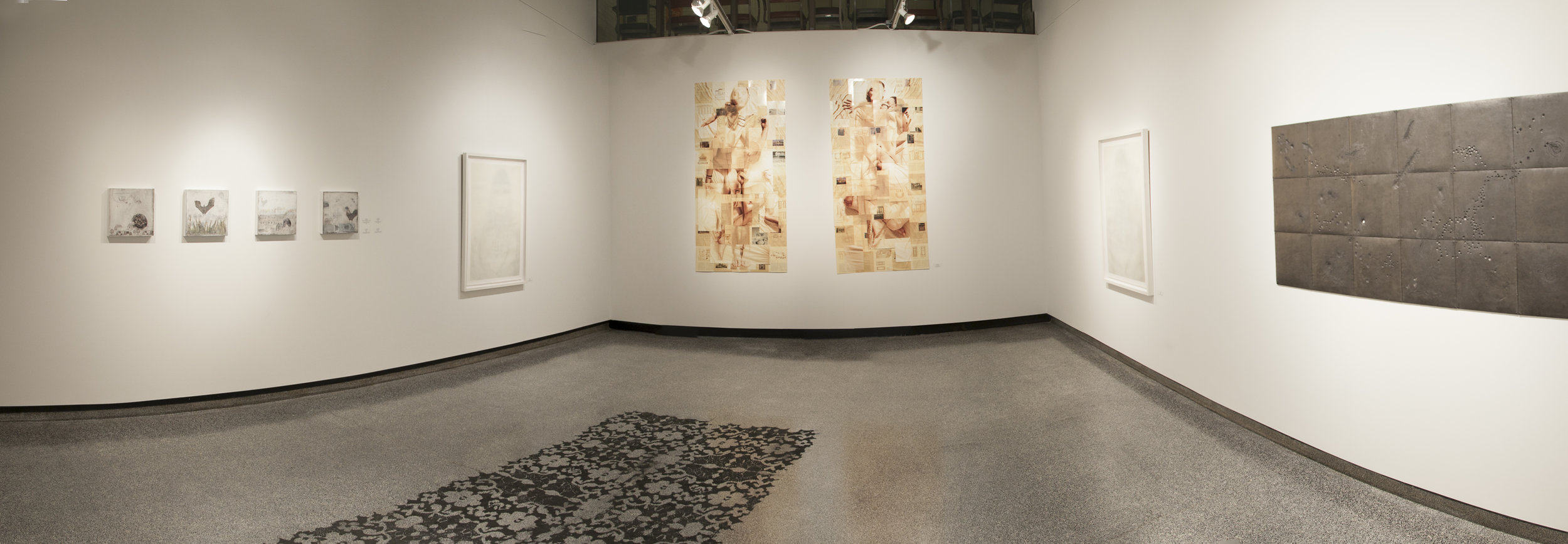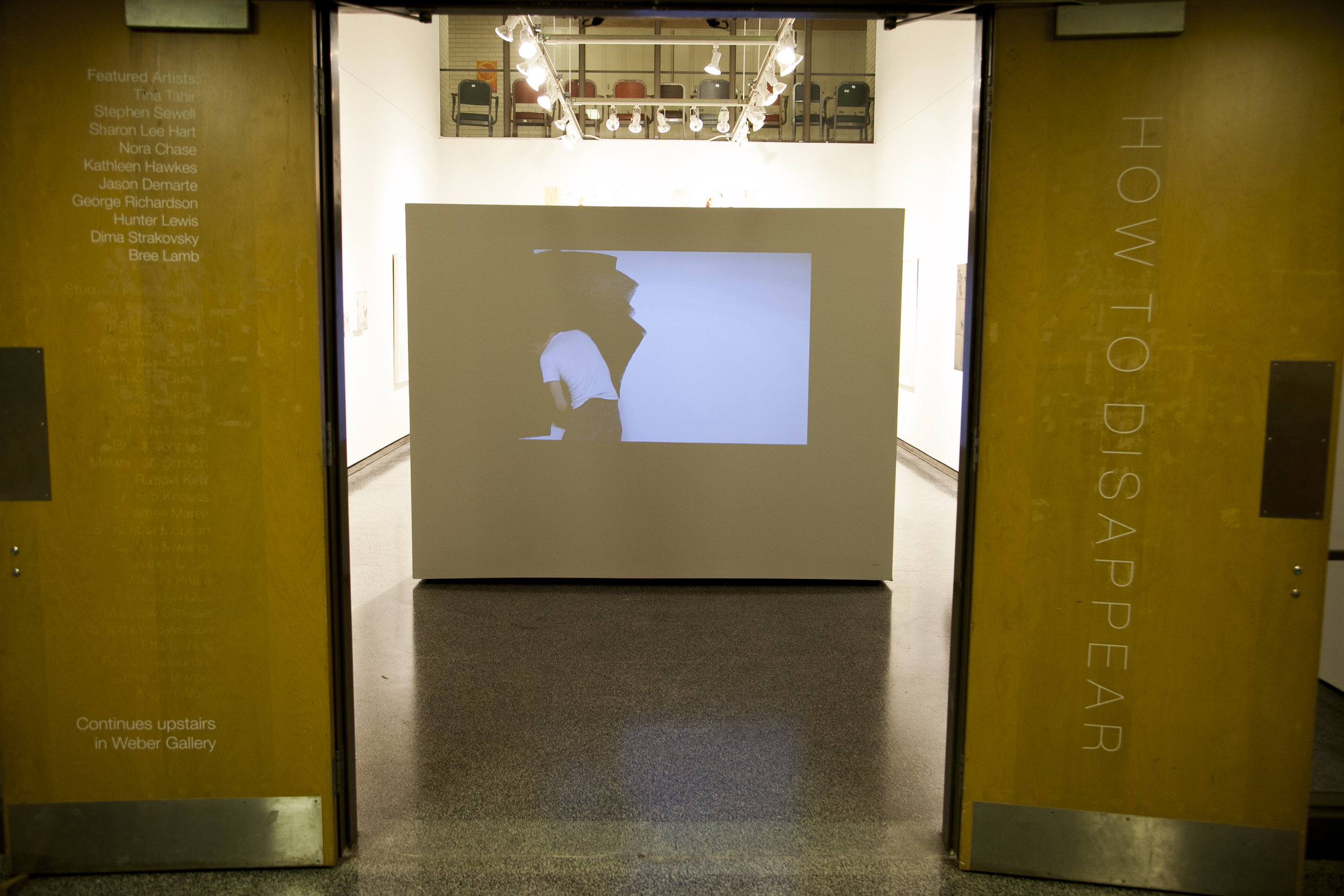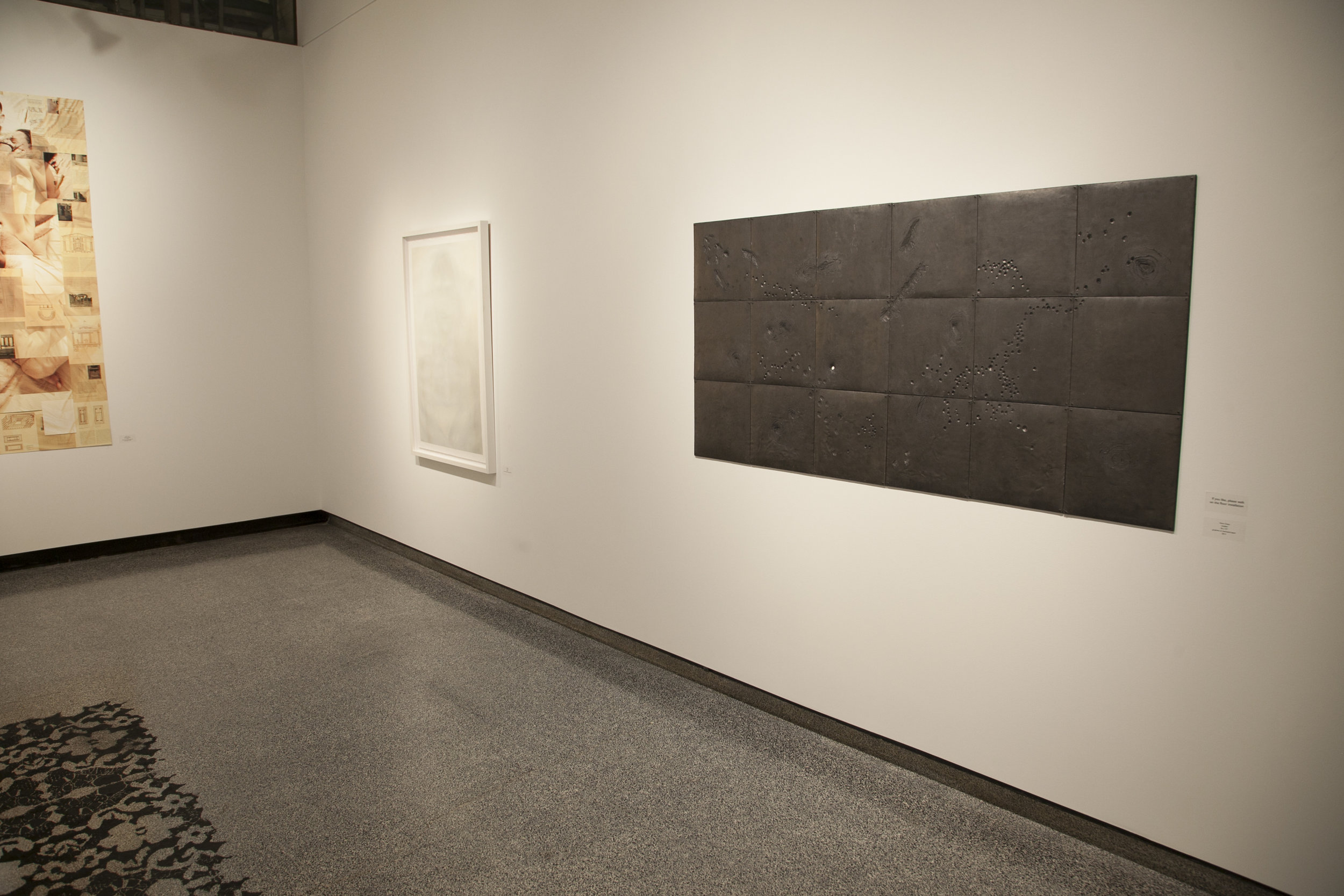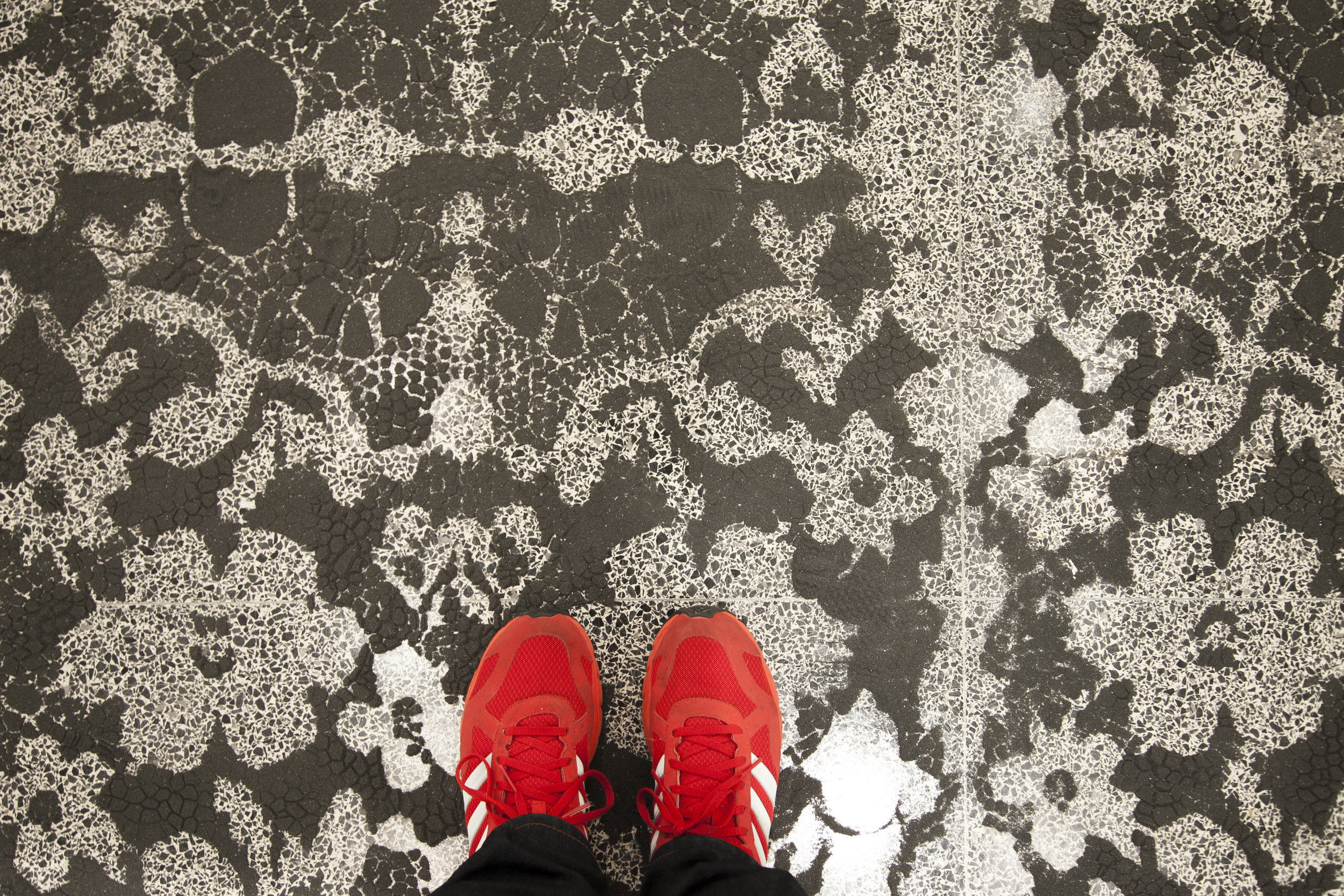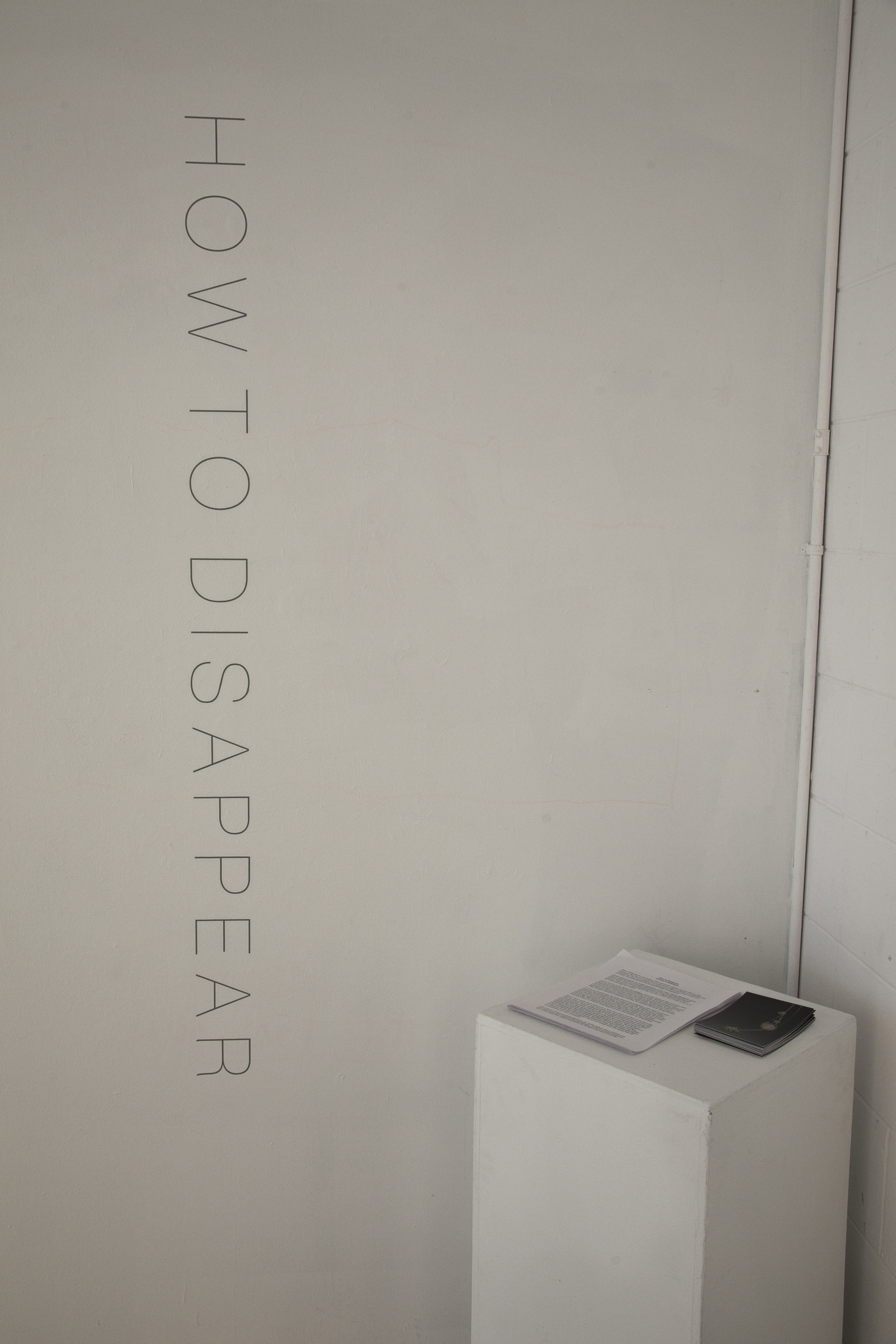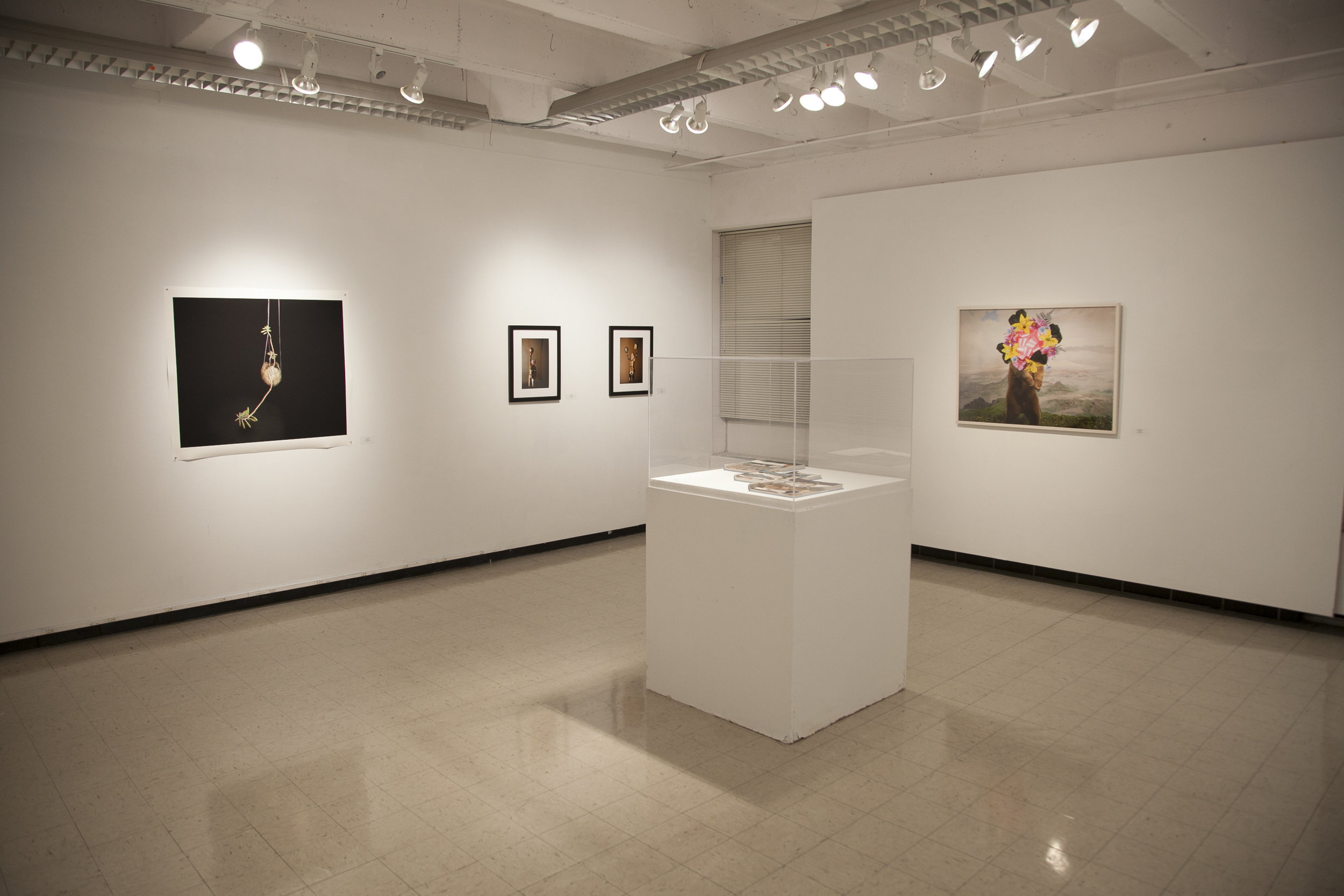How to Disappear
How to Disappear
Curator’s Statement - Roger Boulay
When I think about outer space, I feel very small. I know I am not alone in this sentiment. My tiny joys and problems and stories begin to vanish. It is hilarious how insignificant I am. For a moment, I no longer have to be at the center of my own narrative. I am temporarily free of myself. I begin to disappear.
Stephen Sewell shares my willful dissolution in his video, Taking Myself Out of the Picture. While there is no mental drift into the cosmos, Sewell consciously and determinedly erases himself with black paint over roughly sixteen and a half minutes. This gesture is a little frightening, but also a relief. Isn’t it nice to be rid of the white male ego for a while?
Hunter Lewis’s work, Mutual Sarcophagus, shares the desire to slip out of the meat-suits we are trapped in during our brief time on earth. The title connects the fragmented, fractured nature of Lewis’s aesthetic with the post-mortem vessels built for souls to travel off from after death. The urge to disconnect from the body at the moment of dying in this work is as old as the pyramids. Yet the piece is also a meditation on the beauty of flesh and skin. Lewis’s piece lingers on the curve of a thigh, the space between collarbone and chin, the comfort of a lover alongside you.
If Lewis and Sewell make the body ethereal and weightless, Tina Tahir’s intricate magnetite rug emphasizes the body’s mass and inertia. Walking on her design, I concentrate on my stride and gate. I can feel the sole of my foot receiving orders from my brain as I contribute to the destruction of the artwork. If only we were this aware of our imprint on the earth in so many other, everyday moments in our lives. The strange magnetism of the material in Tahir’s piece makes the work seem otherworldly. The magnetite doesn’t behave like normal dust. It has a special gravity that pulls it back to towards the gridded structure that defines its composition.
Similar square grids flank Tahir’s piece. Both Nora Chase and Sharon Lee Hart play with the trope of the grid; they simultaneously celebrate and violate the strict order of the grid’s edict. Chase’s meticulously layered paper evokes the moon through the gray of its graphite-laden, cratered surface. Or maybe it’s a map sent from the Mars Land-Rover. Or a dead landscape that still contains a few semi-erased marks of mankind. Hart’s panels share in this layered approach to erasure. Hart threatens to whitewash over her own painstakingly collaged imagery with gesso, creating a series of palimpsests atop one another. Hart’s process echoes her point: our culture is full of problems we attempt to simply whitewash away. Yet, the whitewash begins to disappear as quickly as it is applied. There is no escape from the reality that we are destroying our own civilization.
The cultural critique continues upstairs in the Weber gallery. Jason DeMarte and Bree Lamb cover and conceal in their photographs. Products overtake landscape. Upon closer inspection, objects and spaces we thought to be real are actually completely fabricated. Every success or triumph is blinded by a price tag, subservient to the ever-present dominance of the dollar. We are so submerged in the production of late capitalism that it is impossible to tell what is real. Everything disappears into service for the sale.
Dima Strakovsky’s cut books contain another challenge to the status quo. He cuts away layers of pages to reorder the history of Impressionism. Upsetting the canon upsets the marketplace. Yet Strakovsky is up to more than just making mischief with the history of art. He juxtaposes imagery about race, gender and beauty in his suggestions for an alternative telling of codified historical narratives.
The Weber gallery contains a wide-range of photographic imagery. Amongst billions of digital images, it is easy to forget how beautiful and intimate the surface of a printed photograph can be. The dance of markings, tape and thread across imagery transforms George Richardson’s photographs from windows looking upon the world into tactile objects that activate the sense of touch. These are the final drafts of sad poems. Bits and pieces are crossed out and erased. Richardson has reworked large passages of each image to create a portent for a particular place.
Across from the energy of Richardson’s surfaces, a succulent dangles in Kathleen Hawkes’ photograph. Someone planted it in a coconut shell and suspended it in the Fijian air. It hangs in orbit, a bright, lonely planet defying the blackness that threatens to consume it. It is a clear metaphor for the dire predicament of many South Pacific islands; the ocean will engulf them as our planet warms and waters rise. The succulent, like the island it lives on, exists in a precarious place. A storm could snap the lines holding it any day and throw it to the ground. It is stuck in a perpetual liminal state. All the works in this show are in some state of in between-ness, some spot on the spectrum of disappearing. Yet liminality is also where magic happens. I hope a piece of art in this show holds some magic for you. If at first it doesn’t, close your eyes tight, take a deep breath and pretend that for a moment you are an astronaut, then look again.
Many thanks to the artists who graciously allowed me to exhibit their work in this show: Jason Demarte, Hunter Lewis, Tina Tahir, Sharon Lee Hart, Stephen Sewell, Kathleen Hawkes, George Richardson, Bree Lamb, Nora Chase and Dima Strakovsky. A big thank you to the WSU Art Department for accepting my exhibition proposal and supporting it from infancy to maturity. Special thanks to Mary Lange, Kjellgren Alkire, Kelly Nichols, Alexandra Lakin, Sonja Slater, Lena Yong, Sibat Tazwar and Veronica Foltz for their hard work behind the scenes. And thank you to Kathleen Hawkes, who thought through this project with me every step of the way.

